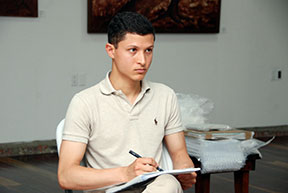
Xavier Robles de Medina translates reality into magic with influences from gothic and carefully chosen ‘material’.
Miguel E. Keerveld on the work of the Surinames artist Xavier Robles de Medina.
Xavier Robles de Medina
Contributing to Magic in Visual Conversation
According to Emmanuel Levinas, “true life is absent”. But despite this, we are still in the world (Keij, 2021). In conversation with artist Xavier Robles de Medina during the second edition of the Atlantic World Art Fair 2022 (AWAF-22), I am confronted with time as consciousness. Knowing that transaction of knowledge had been taking place in the sensational space of this ‘consciousness time’, I acknowledge our encounter as magical. But what is magic exactly?
I see magic as a practice of philosophy in Levinas’ sense. Thus ‘the wisdom of love at the service of love (Beals, 2007). Maybe also an appearance of true life? During the panel Magic in Visual Conversation (hosted by Readytex Art Gallery at AWAF-22), I was dragged into deeper complexities of the relation between Xavier’s practice and his thinking. In my understanding, this object-subject entanglement is what I call ‘an awakening of magic’.
Video and text for “magic in visual conversation”:
https://www.youtube.com/watch?v=RCbyvucr1-0&feature=emb_logo | https://xavierroblesdemedina.com/preface/
Magic feels uncategorized. In pursuit of contributing to un-categorization, Xavier finds frictions relevant. Therefore, his art works are spaces to connect things that are not related. In this sense, he creates abstract correlations to which I refer to as ‘the subjective’ and quote the Portuguese poet Fernando Pessoa: “The subjective is the brush with which the objective is painted” (Keij, 2021). Xavier translates reality into magic with influences from gothic and carefully chosen ‘material’. In this composition, he combines his subject matters into a language that triggers sensational confusion. His artistic intention is “to confront contemporary culture”.
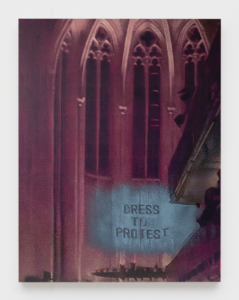
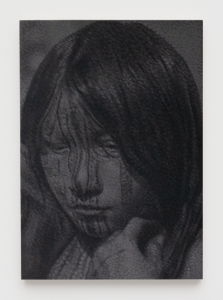
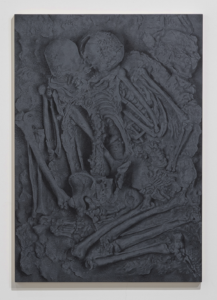
Untitled (dress to protest) | acrylic on wood/Wayana facial painting. French Guyana. 1953. | acrylic on wood/
The original position of the skeletons from the double burial from Grotte des Enfants. Upper Paleolithic, Italy. c. 24000–20000 BC | acrylic on wood
I am carefully listening to Xavier’s story. In sharing the process that brought him to what he explores through his work, I sense interesting patterns and traces. I am recognizing something familiar. Could this intimacy be our shared Caribbean essence, or is it the vulnerability of time? Between 2014 and 2017 de Medina’s question and disappointment of not getting a USA visa after his study over there lead him into isolation, until he finds himself emerging from Berlin, Germany. Recently he participated in the 14th edition of Dakar Biennale (Dak’Art 2022) for contemporary African art in Senegal and Art Basel in Hong Kong.
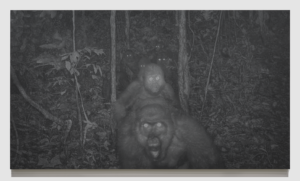
Gorillas in the Mountains of Southern Nigeria: World’s rarest great ape pictured with babies, BBC News, 9 July 2020 | acrylic on wood
Xavier Robles de Medina enjoys misinterpretations. In general, how an other perceivs his work does not matter much. At the end all comes down to what makes sense to the spectator’s imagination. Except for creating relations that may seem as not exsisting, Xavier is especially fascinated to question the superficiality of images in contemporary culture that opperates through the lense of capitalism. He constructs portals to perform his magic that appers as invisible spaces or wrapped realities; imagination through which his specatators paint images that make their imaginative appear. A visibility as cognition or the linguistic expression of a conceptual understanding in Levinas’ term (Beals, 2007).
